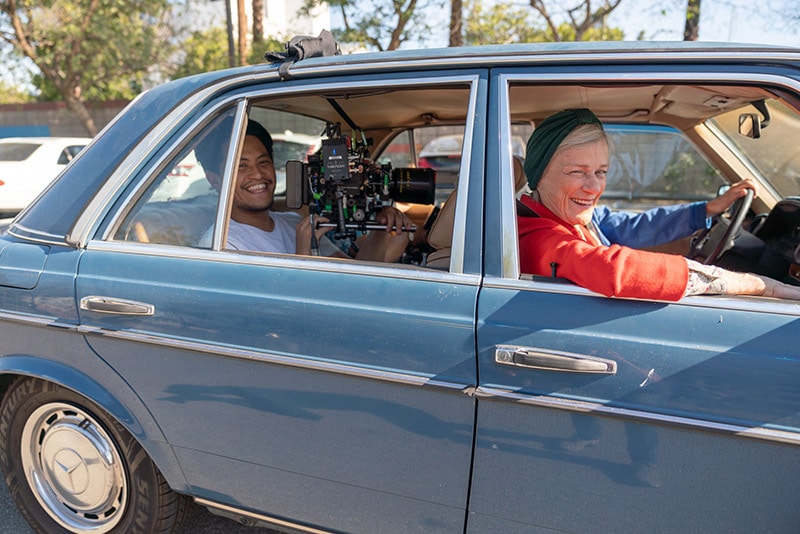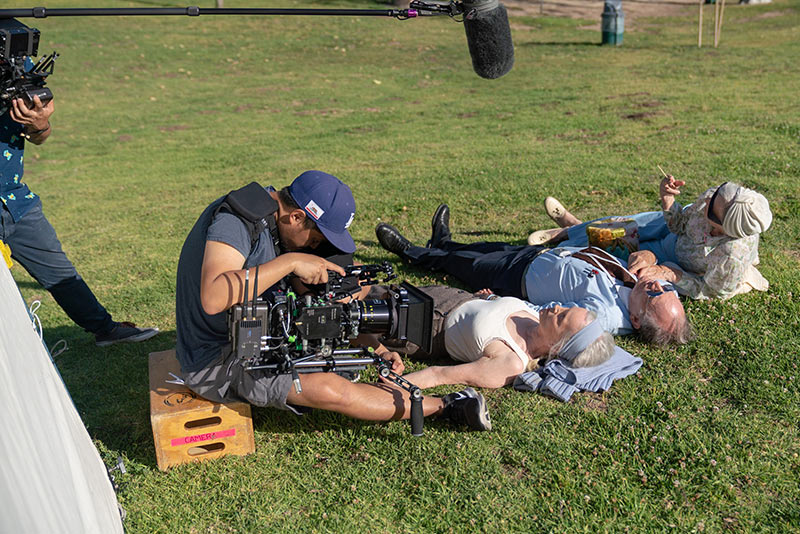What Does It Take to Be a Successful Cinematographer?
“Not only does the cinematographer prepare the meals for the crew and cast, but also knocks on your trailer door to let you know that it is time to get to the set to create magic,” sarcastically quipped Julia Louis Dreyfus while presenting the award for Best Cinematography at the 2020 Oscars. The truth is, while many of us love watching movies, the importance of cinematography and the role of a cinematographer often gets overlooked. When we think of filmmaking, directors and actors get all the prestige and limelight. Yet behind the scenes, it takes a concerted effort from production to crew to block a scene, light the set and adjust the camera’s focus. Perhaps Louis Dreyfus was right about one thing—cinematographers are the unsung heroes.
LA-based cinematographer Jon Keng is, in fact, one of them. Growing up in a Peranakan family in Singapore, Jon was one of the first Singaporeans to graduate from the American Film Institute. Since then, the 35-year-old has made a name for himself in Hollywood by working as the Director of Photography on blockbuster films such as Burn, starring Josh Hutcherson and Suki Waterhouse, and Before you know it featuring Mandy Patinkin. The short films he has worked on like Fata Morgana, Cocoon and Tadpoles have received accolades and acclaim both in the US and internationally. In an industry that relies heavily on human movement, the rising star shares his experiences on set and how to create visual artistry.
It’s about the stories
“The most important thing I learned at film school was storytelling and visual language. I usually skipped the technical classes to sit in on directing and writing classes. I’m interested in the humanity in front of the screen and the thing I respect the most in filmmaking is the performance, especially if it’s a moving scene. Film is a very experiential medium because it can convey authentic emotions. I judge a scene in a movie by whether or not the audience understands what the characters are going through. And if they do, I think it’s a successful piece of art.”
Think of it like painting
“I started out as a wedding photographer and documented newlyweds for 6 years before becoming a cinematographer. There’s a huge difference between the two. Photography for me is the art of subtracting. You go to a scene and decide what you want to take out of the frame, and then you’re left with a photo. Film is the complete opposite. It is more like painting where you have to literally start from scratch and build every element from the ground up. You paint a story.”
Hollywood doesn’t have an open-door policy
“When I first went to Hollywood, nobody really took me seriously. I spoke with a heavy accent and people didn’t really understand what I was saying. I think a lot of Asian men in Hollywood are emasculated in the sense that people don’t take us very seriously especially when we’re in positions of power. Of all the different departments, I’m probably in charge of the biggest crew. I try to be nice, but am also firm with them. Eventually, I started working with a crew that really saw my skills as a director of photography. And they saw that I could actually teach them something and they could grow with me. In America, I try and hire Asian Americans because they are probably the most underrepresented class in the industry.”
Causing a scene is inevitable
“I was personally fired by Chris Doyle on the first day of shooting! It was for a project I worked on while I was still at film school. I got yelled at for a good one hour, in front of the entire Singaporean crew. In all fairness, I had no idea what my role was meant to be. But it really destroyed me. This was a guy that I had looked up to and written about. For the longest time, I was known as the guy that got fired by Chris Doyle, but the experience made me more humble. If that had never happened to me, I think I would be a very different kind of cinematographer now. I’m much more subservient to the director’s vision of the film.

Identifying your working style is key
“I don’t have a visual style but I have a specific working style. It’s actually something I learnt during my days as a wedding photography. It’s important to me to be able to capture the moments without interfering. I always operate a set where the actors don’t even sense my presence and are open to move anywhere they want, so that they don’t get hindered by the process of filmmaking I try to create an environment where actors can really perform. I always operate [the camera] myself, as it allows me to feel the intimacy of the scene that way. It’s a completely different feeling if you are relaying instructions to somebody, who does all the camera work. When you’re right there in the thick of action, you even feel the actors brush past you; they’re often very close to my lens.”
Experimenting is part of the process
“I always try to approach a new project with a fresh lens. Unlike directors who usually work in one genre for most of their careers, I prefer doing a range of different kinds of films, like working on an action flick in Taiwan to shooting a light-hearted indie comedy in LA. Every script has a different story and every story deserves a different visual language. It should have its own identity. I guess that’s why every film I shoot looks so different. I think a lot of people can shoot a gun fight or a horror scene well, but to shoot two people sitting in a room talking is where the challenge lies.”
Art requires conflict
“I think that art is often borne out of conflict. The high budget projects where I’m given the luxury of choosing any camera and having access to a 50-man crew aren’t necessarily my most interesting projects. I realised I can’t actually create when everything is so readily available. I work much better when I have to be pushed in some way. Senior Love Triangle is the project I’m proudest of, because I had to work with a 30 mm lens for the entire shoot. And that restriction pushed me to think very hard about the visual language. Every day, I had to be creative and rethink the way we shot the dialogue scenes and how we would block the actors’ movements. The film, based on a photo documentary series by photographer Isadora Kasofsky, follows a love triangle between two women, Jeanie and Adina, and their mutual lover Will in a retirement home. I was very nervous because she’s one of the best photojournalists I’ve ever met, but we’re both really happy with the end result.”

Know Thyself
“You have to be confident in yourself, your family background, your roots, where you come from. If you don’t really understand yourself, it’s hard to eventually develop a space for yourself to create. I’m so proud to be Peranakan and I think that’s where my interest in Asian dramas comes from. I find a lot of inspiration in the behaviour and psyche of Asians, and why we choose certain paths in life. Those are the sorts of stories I want to tell and direct eventually.”
Hero Image Credit: Juliana Tan


